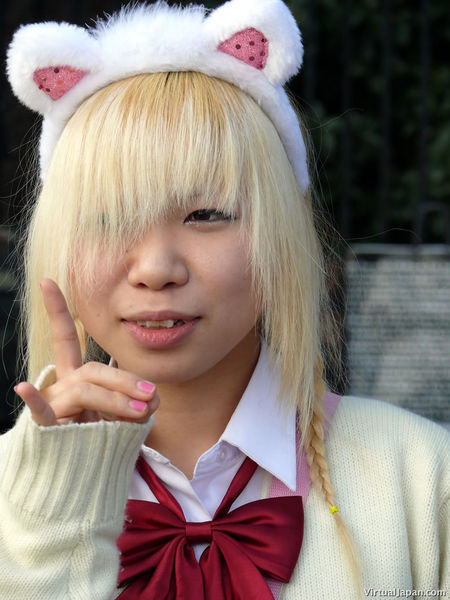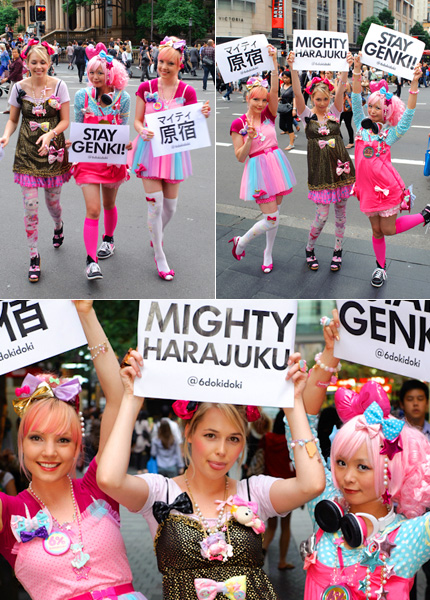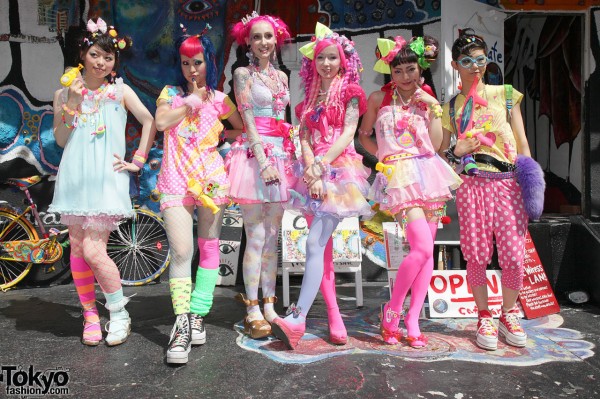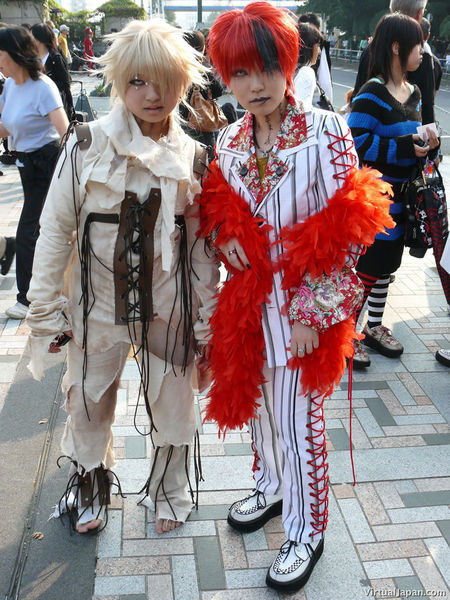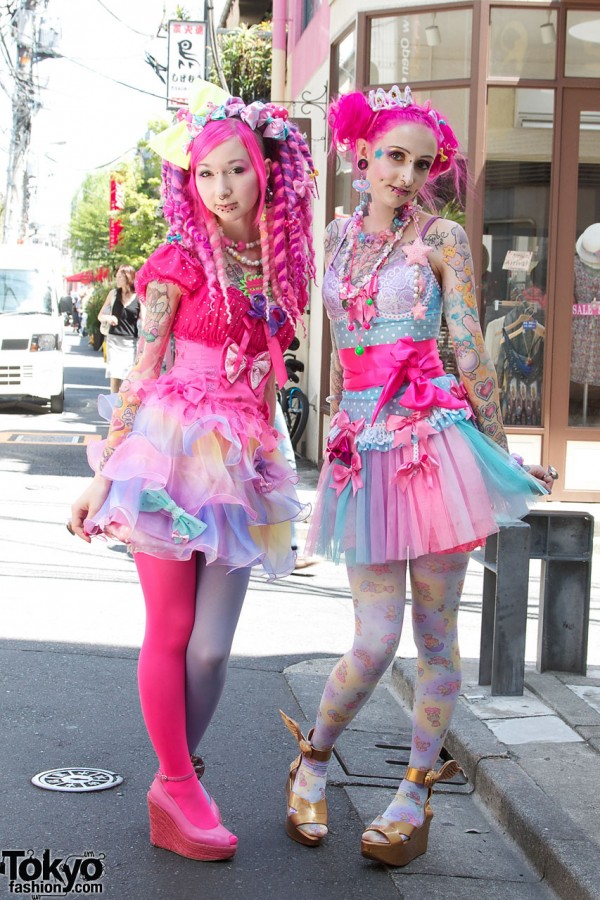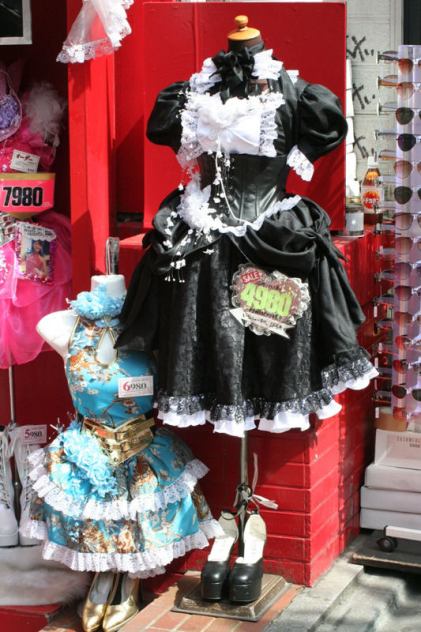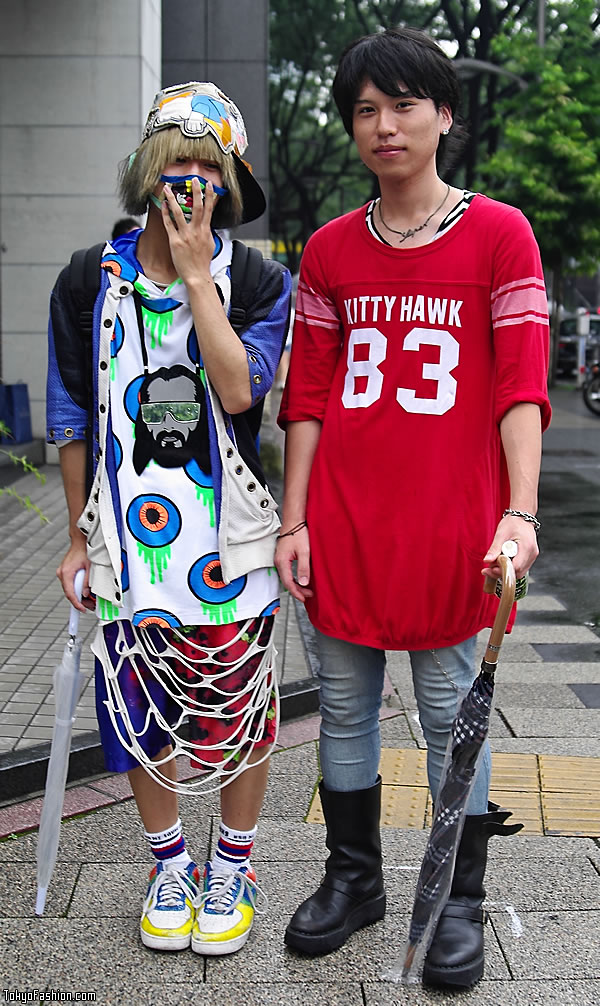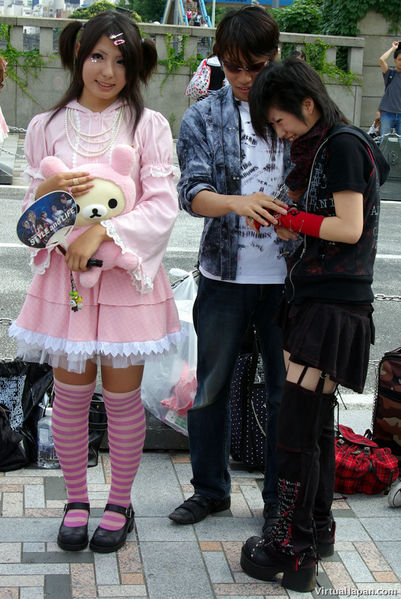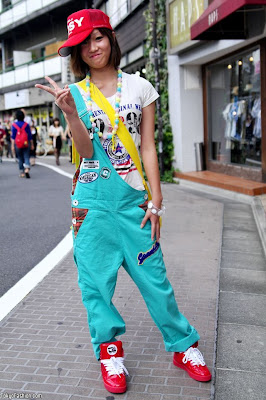Punk style in Harajuku is more of a fashion than a statement.[1] Its fashion mainly consists of dark colors, plaid, chains, and zippers. Punk style is also one of the more gender-neutral fashions in Harajuku.[1]
Ganguro is a style that symbolizes the average American teenager. The term translates to ‘black-faced’. The basic look is what Westerners would call a ‘California girl’, with bleached hair, dark skin, fake eyelashes and nails. It is not clear how Ganguro came to be. Many assume[who?] it originated in the early 1990s, and was meant as a way of rebelling against the traditional Japanese ideas of beauty (pale skin, dark hair, etc.)
Cosplay is more of a costume-based style. A cosplay enthusiast will usually dress as a fictional or iconic character from a band, game, movie, anime, or manga.[1]
Ura-Hara is another section of Harajuku, which caters to a mostly male population interested in a hip-hop, graffiti, and skater fashion and culture.[9] Ura-Hara is seen as the opposite of Harajuku in that it’s more hidden and reserved.[9]
In addition to Harajuku is its counterpart, known as Visual Kei. this refers to the style of bands and their fanbase. The term Visual Kei literally means a ‘visual style of music’. The melodies of the music these bands perform often resemble eighties rock, heavy metal, or techno; in some cases, the sound is a good mix of the three. The fashion began in the 1980s, when American metal bands were popular. Japanese fans loved how their idols would dress frantically and paint makeup wildly on their faces, so they began to emulate their style. This mimicking is also known is costume play, or cosplay.
